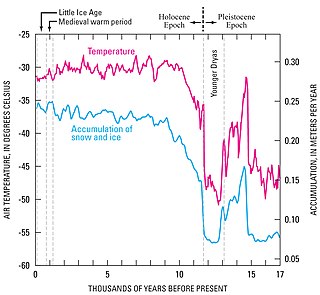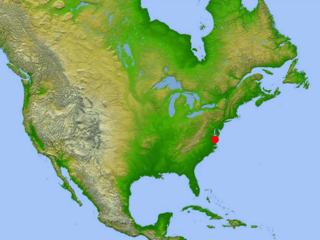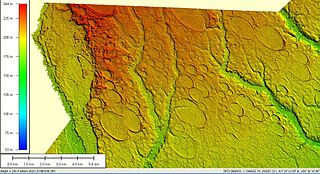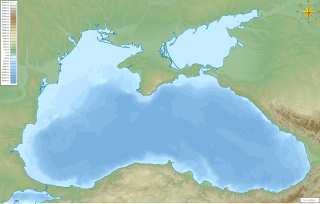The lead section of this article may need to be rewritten. The reason given is: Lead does not summarize content..(November 2014) (Learn how and when to remove this template message) |
Alexander Tollmann's bolide, proposed by Edith Kristan-Tollmann and Alexander Tollmann in 1994, [1] is a hypothesis presented by Austrian geologist Alexander Tollmann and paleontologist Edith Kristan-Tollmann, suggesting that one or several bolides (asteroids or comets) struck the Earth at 7640 BCE (±200), with a much smaller one at 3150 BCE (±200). If true, this hypothesis explains early Holocene extinctions and possibly legends of the Universal Deluge. [1]
Edith Kristan-Tollmann nee Edith Kristan was an Austrian geologist and paleontologist. A prolific scientist with an interest in micropalaeontology and especially the foraminifera of the Triassic and the Jurassic eras, Kristan-Tollmann published widely in her field. She is also known for originating with her husband Alexander Tollmann a thoroughly documented theory of the evolution of human legend and social structures as a result of a massive impact event which struck multiple points on earth. The latter has become known as Tollmann's hypothetical bolide.
Dr. Alexander Tollmann was an Austrian professor of geology.

Austria, officially the Republic of Austria, is a country of nearly 9 million people in Central Europe. It is bordered by the Czech Republic and Germany to the north, Hungary and Slovakia to the east, Slovenia and Italy to the south, and Switzerland and Liechtenstein to the west. The territory of Austria covers 83,879 km2 (32,386 sq mi). The terrain is highly mountainous, lying within the Alps; only 32% of the country is below 500 m (1,640 ft), and its highest point is 3,798 m (12,461 ft). The majority of the population speaks local Bavarian dialects as their native language, and German in its standard form is the country's official language. Other local official languages are Hungarian, Burgenland Croatian, and Slovene.
Contents
- Scientific evaluation
- Geological criticism
- Isostatic rebound
- Dating
- Megatsunami
- See also
- References
- External links
The claimed evidence for the event includes stratigraphic studies of tektites, [2] [3] [4] dendrochronology, and ice cores (from Camp Century, Greenland) containing hydrochloric acid and sulfuric acid (indicating an energetic ocean strike) as well as nitric acids (caused by extreme heating of air).

Stratigraphy is a branch of geology concerned with the study of rock layers (strata) and layering (stratification). It is primarily used in the study of sedimentary and layered volcanic rocks. Stratigraphy has two related subfields: lithostratigraphy and biostratigraphy.

Dendrochronology is the scientific method of dating tree rings to the exact year they were formed. As well as dating them this can give data for dendroclimatology, the study of climate and atmospheric conditions during different periods in history from wood.

An ice core is a core sample that is typically removed from an ice sheet or a high mountain glacier. Since the ice forms from the incremental buildup of annual layers of snow, lower layers are older than upper, and an ice core contains ice formed over a range of years. Cores are drilled with hand augers or powered drills; they can reach depths of over two miles (3.2 km), and contain ice up to 800,000 years old.
Christopher Knight and Robert Lomas in their book, Uriel's Machine , argue that the 7640 BCE evidence is consistent with the dates of formation of a number of extant salt flats and lakes in dry areas of North America and Asia. They argue that these lakes are the result remains of multiple-kilometer-high waves that penetrated deeply into continents as the result of oceanic strikes that they proposed occurred.
Christopher Knight is an author who has written several books dealing with theories such as 366-degree geometry and the origins of Freemasonry. Knight appears in the two-part History Channel documentary Decoding the Past – "Mysteries of the Freemasons".
Robert Lomas is a British writer, physicist and business studies academic. He writes primarily about the history of Freemasonry as well as the Neolithic period, ancient engineering and archaeoastronomy.
Uriel's Machine: The Prehistoric Technology That Survived the Flood is a bestselling book published in 1999 by Christopher Knight and Robert Lomas. The book's name is derived from a character of the same name in the Book of Enoch. In Knight and Lomas's interpretation of the Book of Enoch, Uriel warns Enoch about the impending flood, giving him instructions for building a form of solar observatory for the purpose of preserving advanced knowledge into a time of global disaster by teaching him the movement of the Sun against the horizon over a period of time, which Enoch then records in detail in the Book of the Courses of the Heavenly Luminaries.

















